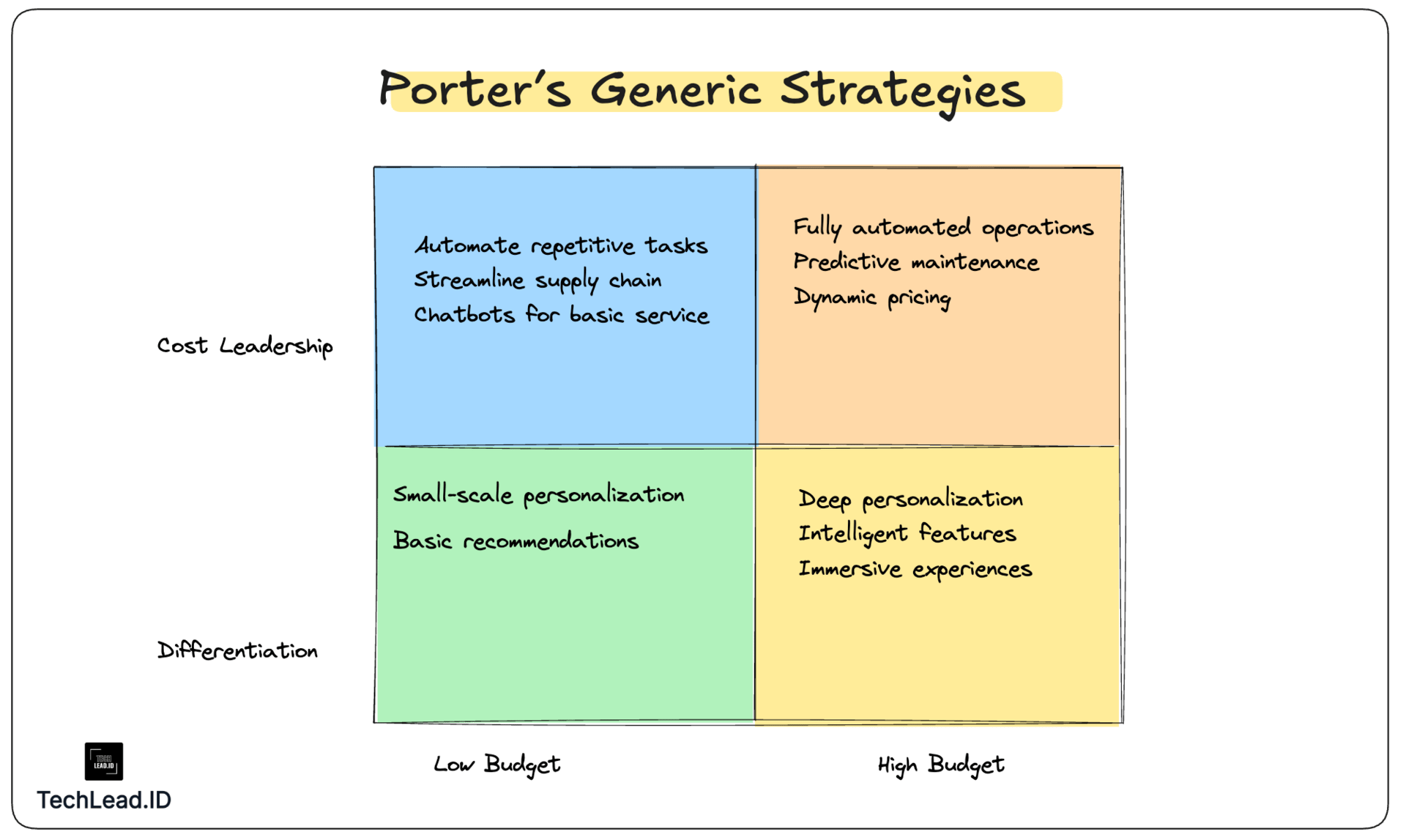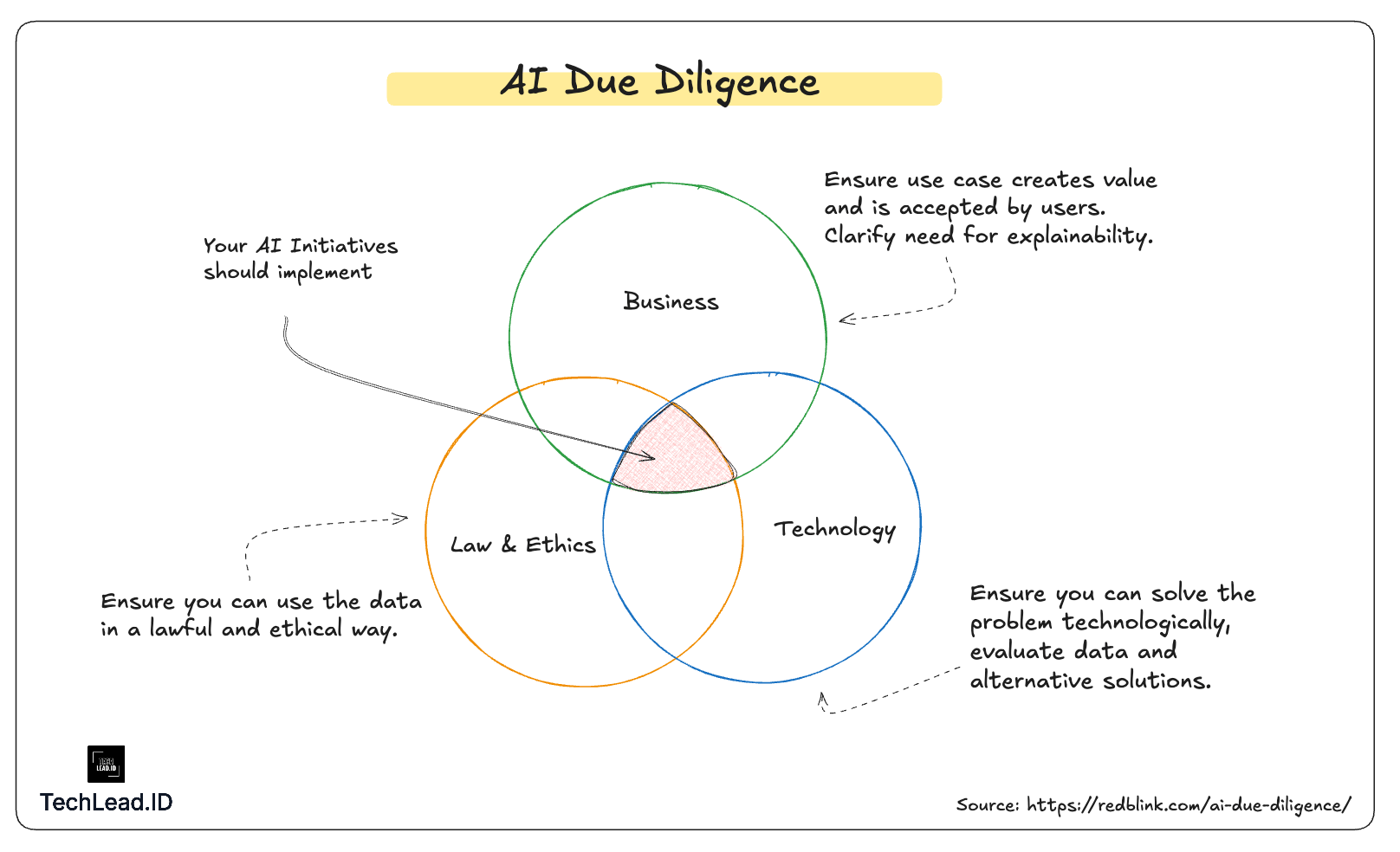- TechLead.ID
- Posts
- Practical Notes “AI for Everyone” by Andrew Ng – A Strategical Guide for Tech Leaders
Practical Notes “AI for Everyone” by Andrew Ng – A Strategical Guide for Tech Leaders
Notes from a course I almost skipped (but shouldn’t have). A Practical Takeaways from Andrew Ng’s AI for Everyone for Today’s Tech Leaders.
When I first signed up for Andrew Ng’s AI for Everyone, I honestly thought it would be an “Another boring course” . It looked too basic, almost like an intro course for people who just want to drop “AI” into their LinkedIn post. But after going through it, I realized it’s actually one of the most useful guides for leaders and tech professionals who want to understand how AI really fits into their work.
The course is not about coding neural networks or learning complex math. Instead, it focuses on how to think about AI in a strategic way. And that’s exactly what tech leads, product managers, and executives need right now. Because let’s face it, the hype is everywhere. Everyone says AI will change the world, but very few talk about how to actually make it useful inside a business.
Andrew Ng often says AI is like electricity. When electricity was first adopted, it didn’t happen overnight. Companies had to figure out where it made sense, how to redesign processes, and how to train people to use it. The same is true with AI. The big shift won’t come from one big bang moment, but from small, deliberate steps.
Automating tasks, not jobs

Automate Task, Not Jobs
One of the strongest messages from the course is this: AI replaces tasks, not jobs. That might sound like wordplay, but it’s actually the key to making sense of AI adoption.
A job is made up of many different tasks. Some of those are repetitive and predictable, while others need creativity, judgment, or empathy. AI is great at the repetitive stuff, not so great at the human side. So instead of asking “Which jobs will AI replace?” leaders should be asking “Which tasks in this role can AI take over, and which tasks should stay human?”
Think about customer support. AI can handle FAQs, ticket routing, and even detect sentiment in messages. But when a customer is angry or confused, it still takes a human to calm things down and build trust. Or take software engineers. AI can write boilerplate code, suggest fixes, and generate unit tests. But designing a scalable architecture or mentoring junior developers is still a human-driven activity. The same goes for product management. AI can summarize interviews or create draft documents, but prioritization and getting alignment across stakeholders is something only humans can pull off.
When you look at it this way, AI adoption isn’t about replacing people. It’s about redesigning roles so your team can focus on the parts of work that really need creativity and judgment.
Using strategy to decide where AI fits
The essence of strategy is choosing what not to do - Michael Porter
Even if you believe in the idea of automating tasks, the next question is where to actually start. Andrew doesn’t directly talk about Michael Porter, but I found his ideas line up nicely with Porter’s Generic Strategies. It gives you a simple lens to decide how AI fits your business.
If your company needs to run lean and keep costs down, AI can help with cost leadership. That means using it to reduce waste, automate manual processes, and make your operations more efficient. For example, a logistics startup might use AI to optimize delivery routes or speed up invoice matching. It’s not flashy, but it saves money and scales efficiency.
If your company has more budget to experiment, you can use AI for differentiation. This is where you focus on creating unique, high-value features that competitors can’t easily copy. Think of Spotify’s personalized playlists or Netflix’s recommendation engine. These aren’t just efficiency tools, they define the customer experience and make people stick with the product.

Porter Generic Strategy
The important point is to avoid spreading AI experiments everywhere just because it feels exciting. AI should be a lever for the direction you’ve already chosen, not a distraction that scatters your focus.
Growing AI capability the right way

Team Growth Strategy
A mistake I’ve seen in some companies is trying to hire expensive AI talent before they’re ready. They bring in PhD-level ML researchers but don’t have the data, infrastructure, or use cases lined up. The result is frustration on both sides.
A better approach is to start small and grow capability over time. Begin with pilot projects that are narrow and easy to measure. Something like automating a simple classification problem or building an internal chatbot can deliver value quickly. These small wins prove the concept and help you build momentum.
From there, invest in upskilling your current team. Your engineers already know your systems, your data, and your workflows. With a bit of training, they can drive early AI projects much more effectively than outsiders. You can create 30 or 90 Days AI Course Program for your team. Once you reach the point where AI is clearly driving ROI and you have more ambitious projects lined up, then it makes sense to bring in senior AI talent and build a stronger infrastructure.
Doing proper due diligence

AI Due Diligence
One reason many AI projects fail is because leaders treat them like traditional software projects. But AI is different. It’s probabilistic, it needs lots of data, and its results can be unpredictable. That means you need to do your homework on two levels: technical and business (with one additional level: Ethics and Law).
On the technical side, you have to ask whether the system can actually perform well enough. Do you have enough data? Can it hit the accuracy or latency levels required? How hard will it be to integrate with existing systems? And what’s the realistic timeline for building and maintaining it?
On the business side, you need to ask whether the project actually creates value. Will it save costs, generate revenue, or improve customer satisfaction? Or is it just a “cool demo” that won’t get adopted? A lot of AI projects fail because the intended users don’t actually want to change their workflow, so adoption falls flat.
Another piece of due diligence that often gets overlooked is law and ethics. Just because something can be automated with AI doesn’t mean it should. Leaders need to think carefully about privacy, data ownership, and the potential for bias in models. Regulations like GDPR or upcoming AI Acts in different regions can create real legal risks if ignored, but beyond compliance there’s also the matter of trust. Customers and employees want to know that AI systems are being used responsibly. This means being transparent about how data is collected and used, making sure decisions can be explained, and setting clear boundaries on what AI should and should not do.
The common pitfalls are easy to spot but still common: chasing vanity projects, jumping into advanced R&D before nailing the basics, or ignoring the cultural side of adoption. Leaders who succeed with AI are the ones who take both the tech and business angles seriously.
Leading with culture and momentum
At the end of the day, AI adoption is not just a technical challenge, it’s a leadership one. If you move too slowly, competitors will pull ahead. But if you move too fast without the right foundations, projects collapse and your team loses trust.
The best leaders create momentum by starting small, showing value quickly, and communicating clearly. They frame AI as an opportunity, not a threat. Instead of saying “AI will replace jobs,” or “We will replace this team position” they say “AI will free us from repetitive work so we can focus on what matters.” or “AI will added value for our project offering” That simple shift in message makes adoption smoother and reduces fear. On the flip side, a small but well-adopted AI experiment can create big impact if the team feels empowered.
Final reflections
After finishing AI for Everyone, I realized the course is not about technical depth but about clarity and sequence. The real takeaways are simple but powerful. Focus on automating tasks, not jobs. Use strategy to guide where AI fits. Build capability gradually instead of rushing to hire big-name experts. Do both technical and business diligence. And lead with a culture that sees AI as an amplifier, not a threat.
Use Porter’s Generic Strategies as a decision lens.
If your Budget is low => Cost Leadership
Use AI to reduce operational costs: automate processes, optimize workflows, and scale efficiency.Example: automating invoice matching in finance or supply chain optimization.
Strategic benefit: increased margins without raising prices.
If you have a big Budget => Differentiation
Use AI to create unique, high-value features competitors can’t easily replicate.Example: Automate Market Research with Synthetic Respondent, Spotify’s personalized playlists, or Netflix’s recommendation engine.
Strategic benefit: market defensibility.
The AI journey is not about doing everything at once, but about doing the right things in the right order. And if you’re still on the fence about whether such a basic course is worth your time, I’ll leave you with this quote from Shunryu Suzuki
In the beginner’s mind there are many possibilities, in the expert’s mind there are few - Shunryu Suzuki
Reference:
Reply